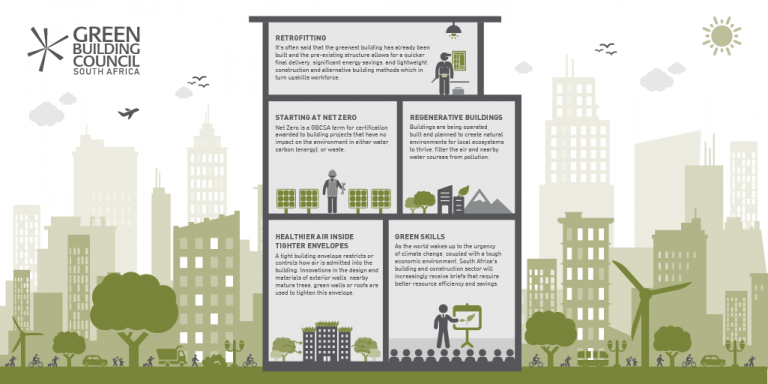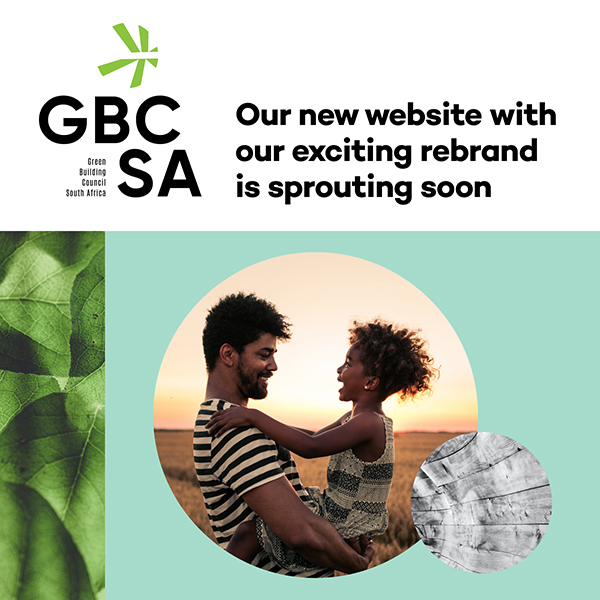
Top 5 green building trends for 2020
February 05, 2020
There are more than 500 certified green buildings in South Africa and this number keeps going up. The rands and sense of building green is becoming better understood by clients and an ever-growing number of services and products keep up with the demands of the green value chain. These are the green shoots of the sustainable building sector that we expect will mature into trends during 2020.
Retrofitting
What is more sustainable, building a new building from scratch or retrofitting an existing one? It’s often said that the greenest building has already been built and the pre-existing structure allows for a quicker final delivery, significant embodied energy savings, and obliges lightweight construction and alternative building methods which in turn requires creative solutions and so upskills workforce. This also future-proofs the building and makes it more profitable. In South Africa we will see more retrofitting across the sector in well-placed commercial buildings being converted to penthouse apartments and luxury hotels, or industrial warehousing being modified into affordable housing, says sustainability consultant Mathew Streatfield of HereToday.
Starting at Net Zero
Net Zero is a GBCSA term for certification awarded to building projects that have no impact on the environment in either water, carbon (energy), or waste. Today firms serious about their contribution towards global warming are starting to take Net Zero as a base requirement for compliance. Companies will become more ambitious with the targets they set for themselves and the types of buildings they create as it reflects their commitment both as private individuals and corporate citizens to our blue planet, says Kevin James of GCX.
Regenerative buildings
Can you imagine a building that takes Net Zero a step further? Buildings are being operated, built and planned that not only use less water and energy than they can generate, but create natural environments for local ecosystems to thrive, filter the air and nearby water courses from pollution, and take advantage of opportunities for a broader socio-economic impact in the construction and operation phases.
Healthier air inside tighter envelopes
A tight building envelope restricts or controls how air is admitted into the building. Innovations in the design and materials of exterior walls, nearby outdoors landscaping using mature trees, green walls or roofs are used to tighten this envelope while taking the load off HVAC systems which ensure healthy and comfortable working and living environments. Material choices in furniture, paints, carpeting and finishes become increasingly important in this tight environment so those which exude toxic chemicals into the air are minimised. Appropriate building envelope design in response to orientation, end-user needs and environmental
context allows for the introduction of passive design innovations such as sun shading, thermal mass storage and potentially even natural ventilation based on prevailing wind conditions further reducing the HVAC load.
Green skills
As the world wakes up to the urgency of climate change, coupled with a tough economic environment, South Africa’s building and construction sector will increasingly receive briefs that require better resource efficiency and savings. The Green Building Council South Africa offers various accreditation courses for professionals at every stage of their career. Benefits extend beyond the expertise and wisdom imparted to exposure to its member base through events and discussion groups. Ask how having yourself or your team accredited by the GBCSA is in your best interest: [email protected].






